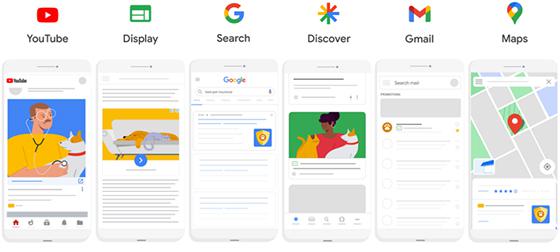
Trends such as changes in Google’s algorithms and product
updates that shaped 2022 will have a major influence on the outcome of campaigns and strategies in 2023.
Zero-click content -- where a person finds the information needed in a search engine
result page (SERP) without clicking through to a new page -- accounted for 25.6% of desktop searches and 17.3% of mobile searches, according to a NP Digital research paper that cites Semrush data.
NP Digital’s research paper outlines findings from anonymous data collected by the company’s platforms from Ubersuggest and Answer The Public.
Some marketers already know that
search engine optimization (SEO) and paid search are not enough, and search and social are increasingly important to use together.
Consumers contribute as creators by leaving reviews on
Google listings, YouTube videos, TikTok, and other platforms. Brands need consumers not just to buy once, but buy again. They need them to advocate on their behalf, publicly.
advertisement
advertisement
One interesting
point is that keyword queries continue to trend toward longer-tail, information-based results. Long-tail keywords have always been important to SEO, but they now are trending to become more critical
in 2023.
Being more specific and anticipating user needs may serve marketing teams better in the long run. The research suggests that long-tail keywords allow marketers to get granular as
people adopt voice search and more detailed questions to search for what they need.
Companies can adopt a long-term keyword strategy by focusing on hitting users at different stages of a sales
funnel or adoption cycle. Consider putting together a strategy that caters to consumers who have left the research stage and are ready to buy.
User privacy is changing how marketers approach
audience insights. Google recently announced that Similar Audiences will be sunsetting by May 2023. This means marketers need to shift their audience strategy to focus on alternative solutions such as
Audience Expansion and Optimized Targeting.
First-party data is more important to ensure that Google can use customer intent signals and optimize toward high-value audiences.
Advertisers need to implement a diverse audience strategy for their paid campaigns that incorporates the upcoming audience-solution changes as well as leveraging in-market, affinity, and
custom-audience segments.
The advice is to implement Google Enhanced Conversions -- a feature that helps to improve the accuracy of conversion measurement by supplementing existing conversion
tags by sending hashed, anonymized first-party conversion data from a website or offline customer data to Google in a privacy-safe way, according to NP Digital.
Big changes are coming to paid
search, and much of it is wrapped in artificial intelligence and machine learning. Think Performance Max. Automated bidding was not “wildly successful” at launch, but in time it became an
essential part of campaign optimization with its ability to achieve return on investment (ROI) goals. Expect Performance Max to continue improving with better controls and data transparency in
2023.
It is also important not to underestimate the importance of Microsoft advertising. Microsoft’s search volume has been quietly growing, per NP Digital. Key milestones include the
acquisition of Xandr and recent partnership with Netflix to offer an ad-supported version of the platform. Microsoft is expecting to double the size of its ad business from $10 billion to $20 billion
per year in 2023. Much of it will be dome through AI services.
As the partnership between Microsoft and Xandr matures, marketers should expect an increase in traffic from search partners
through the Xandr network, according to NP Digital, which could potentially offer a comparable alternative to Google search partners.